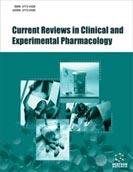Abstract
Background: Glomerulonephritis mostly results from dysregulated immune system. Impaired immune mechanisms can be primary or secondary to an autoimmune disorder. Antinuclear antibodies (ANA) are hallmark of autoimmunity and are frequently present at high titer (≥ 1: 160). ANA are characterized via anti-double stranded deoxyribonucleic acid (dsDNA) and antiextractable nuclear antigen (ENA) antibodies for the identification of underlying autoimmune disease. Heavy proteinuria can affect assessment of autoantibodies hence special attention is required for the definitive diagnosis in such cases.
Objective: Our aim was to determine impact of heavy proteinuria on ANA titer, anti-dsDNA and anti-ENA antibodies in glomerulonephritis patients.
Methods: 150 glomerulonephritis patients were enrolled in this study. All had antinuclear antibodies, samples were tested for anti-dsDNA and anti-ENA. ANA titer of ≥1:160 was taken significant. Proteinuria was assessed by spot protein/creatinine ratio. Data was analyzed using SPSS software version. 20.
Results: Heavy proteinuria was present in 119(79%) patients. Low ANA titer(≤1:80) was present in 37(25%) patients. Of 33 patients with heavy proteinuria and low ANA titer, ANA was characterized in 11 patients. These include anti-dsDNA(two), anti-SSA(four), anti-Sm (one), antihistones( one), anti-RNP(two), anti-Pm-Scl(one) and anti-ribosomal P protein (two).There was no significant difference in the prevalence of various autoantibodies in patients with high or low ANA titer with heavy proteinuria.
Conclusion: This study highlights the importance of low ANA titer in glomerulonephritis patients in the setting of heavy proteinuria. Significant protein loss may alter actual titer of autoantibodies. Hence in this scenario clinically correlation along with ANA characterization via specific autoantibodies is required for adequate patient management.
Keywords: Antinuclear antibodies, anti-double stranded deoxyribonucleic acid, anti-extractable nuclear antigens, glomerulonephritis, systemic lupus erythematosus, dysregulated immune system.
Graphical Abstract
[http://dx.doi.org/10.1136/pmj.79.930.206] [PMID: 12743337]
[http://dx.doi.org/10.1186/1741-7015-11-95] [PMID: 23557013]
[http://dx.doi.org/10.1038/nri3523] [PMID: 24037418]
[http://dx.doi.org/10.1681/ASN.2011030304] [PMID: 22282593]
[PMID: 11777822]
[http://dx.doi.org/10.1002/art.30084] [PMID: 20954189]
[PMID: 10629135]
[http://dx.doi.org/10.1093/qjmed/hch048] [PMID: 15100425]
[http://dx.doi.org/10.1007/s10067-004-0937-0] [PMID: 15801070]
[http://dx.doi.org/10.3904/kjim.2009.24.1.76] [PMID: 19270487]
[http://dx.doi.org/10.1186/1746-1596-4-1] [PMID: 19121207]
[http://dx.doi.org/10.3109/s10165-009-0155-3] [PMID: 19277826]
[http://dx.doi.org/10.4103/0971-4065.114462] [PMID: 23960337]
[http://dx.doi.org/10.1172/JCI14452] [PMID: 11714731]
[http://dx.doi.org/10.1177/0961203306070000] [PMID: 17153847]
[http://dx.doi.org/10.1007/s10875-012-9825-6] [PMID: 23100145]
[http://dx.doi.org/10.1155/2014/321359] [PMID: 24649358]
[http://dx.doi.org/10.1007/s00296-007-0340-7] [PMID: 17429639]
[http://dx.doi.org/10.1007/s10157-014-1002-1] [PMID: 24993947]
[http://dx.doi.org/10.1186/s13075-015-0573-x] [PMID: 25885224]
 3
3




